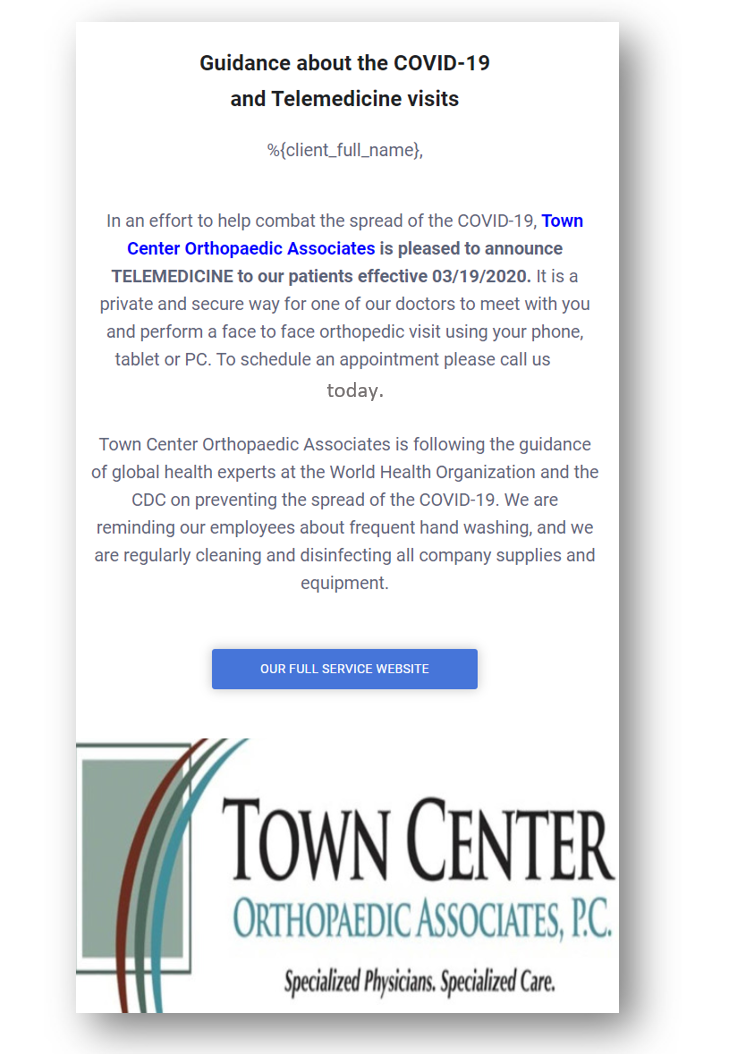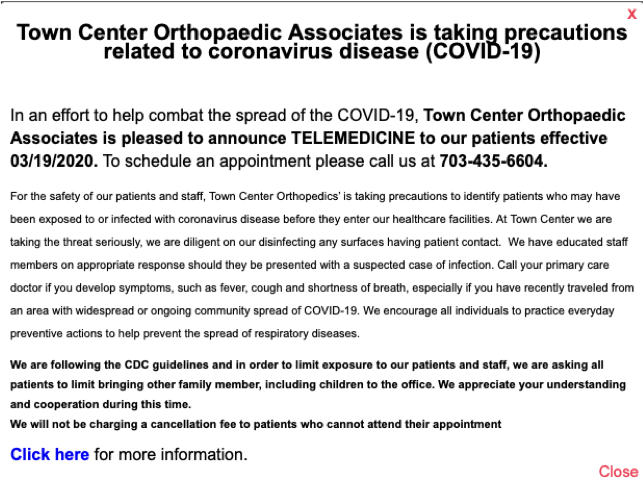COVID-19 is affecting businesses of all shapes and sizes. But if any are feeling the impact of the virus, it’s healthcare businesses. Because healthcare businesses aren’t only serving individuals who feel they may be infected with the virus. They’re still serving individuals with other health concerns and needs.
But, many healthcare businesses need to interact with patients in person to diagnose and treat them. Others don’t need to be in the same room to get the same results.
Which is best? How do you decide?
Here’s how businesses like yours are maintaining operations and serving patients in need of care.
Orthopedic Business Offers Virtual Consultations
Thryv user Town Center Orthopaedics didn’t want their patients experiencing muscular and joint pain to go without treatment. So they began offering virtual consultations and appointments — via phone, tablet and computer.
They’re calling it “TELEMEDICINE.”
How’d they do it? They:
- Sent a marketing message from Thryv to their complete list of patients.
- Enabled online appointment booking, so patients can request appointments through their website.
- Communicated the phone number where patients can request new appointments over the phone.
- Waived appointment cancellation fees.
Here’s the email they sent patients.

Here’s the website pop-up they enabled.

By offering alternative, virtual services (and communicating them effectively), Town Center Orthopaedics says they’re seeing a decrease in cancelations and reschedules.
Which Virtual Service Options Work for Your Business?
We’ve set up an online idea bank of virtual operations options by business type, with recommendations on how you can stay open for business given the pandemic.
- Automotive services: Consider allowing customers to stay inside their vehicle for simple services. Offer online scheduling to reduce wait times. Allow online payment processing to limit the touching of shared surfaces.
- Home services: Communicate health and safety changes you’re implementing for in-person services. Eliminate the need to touch shared surfaces by sending digital estimates and invoices, so clients can pay from their phones.
- Healthcare: In addition to virtual check-ups and consultations, adjust how you interact in person when needed. To limit the number of people in your facility at once, ask patients to wait in their cars, and text them when you’re ready to see them.
- Restaurants: Consider offering to go, curbside pickup and delivery options in lieu of dine-in service. Get creative with family meal or grocery items, and offer cocktails if your state allows it.
- Retail: Now’s the time to implement an online marketplace. Offer incentives like free shipping within a certain radius. Communicate with customers the importance of shopping “local” when they can.
- Salons and spas: Offer business cards at a slight discount, so you can keep cash coming in.
Fitness: Host virtual workout classes, one-on-one or in groups.





